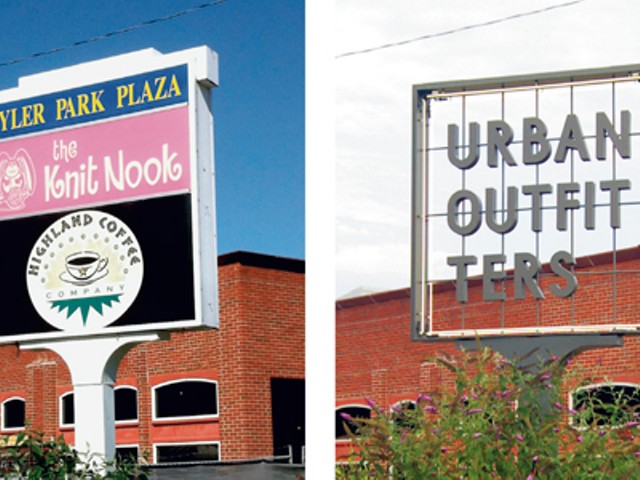Kevin Claxton of Louisville is trying to get his life back on track, overcoming drug addiction and leaving behind a string of legal troubles.
Released from the Franklin County Regional Jail’s Restricted Custody Center — a re-entry program for Class D felony offenders — Claxton has kicked his drug habit. He also got married, became a father, and until recently, had full-time employment.
The program in Franklin County — where he stayed for four months — allowed him the freedom to work during the day, while also providing him with drug counseling and educational opportunities.
“This place really helped me,” Claxton tells LEO. “They gave me job training and counseling. I got my GED here. I absolutely got straight and sober. I wanted to be sober.”
But this wasn’t the first time Claxton had been released from prison, and he describes his previous experience in a work-release program as dramatically different — and not in a good way.
A year after being convicted of second-degree burglary in 2007, Claxton was transferred to the Dismas Charities halfway house in Portland to serve out the remainder of his term, entering the work-release program at Louisville Metro Animal Services.
What he describes is a portrait of a Dismas facility that does anything but rehabilitate, providing lax supervision and poor counseling services, and allegedly allowing rampant drug use.
“It’s a very crooked place,” Claxton says. “It’s supposed to get you adjusted for society, but that’s a crock of shit. To be honest with you, I got worse.”
Claxton says that he consistently used drugs at Dismas’ Portland house until he was released the following year. Several months later, while still using, he failed a drug test, violating his parole and sending him back to prison in a state correctional complex.
“The whole time I was (at Dismas), I stayed high,” Claxton says.
According to Claxton, drugs were both smuggled into the halfway house and brought to the Metro Animal Services job site by friends of the inmates who worked there.
“I’d go to work, get my drugs, get fucked up at work, come back, take a shower, go outside and smoke, and try not to get caught,” Claxton says.
He also claims there were very few programs available for inmates at the Portland house, aside from a cursory monthly questioning from a counselor. Claxton says inmates had to seek outside services for addiction counseling and educational opportunities, often from church groups.
Dismas Charities did not respond to repeated interview requests for this story.*
“(Dismas) wouldn’t bring people in,” Claxton says. “We had to fight to get church people in. We had to fight to get Narcotics Anonymous in. They tell Department of Corrections, ‘Oh yes, we’re doing this, we’re doing that.’ But they weren’t doing anything.
“The people that tried to get their GED, the teacher would only come once in a blue moon. And if they came when you’re at work, you’re out of luck.”
Not only was supervision lax at job sites like Metro Animal Services, Claxton says, but inmates could often roam free while at the halfway house. He says inmates would claim to be sick on weekends, receiving TARC fare to go to a doctor, but instead going wherever they pleased. He also says inmates were free to wander while working for Operation Brightside, the city’s clean-up initiative.
“They’d open the front door, and we’d have eight blocks in each direction to go walk and pick up trash, we’d just have to be back by 5, or whatever,” Claxton says. “They weren’t watching us. There was no supervision at all.”
While Claxton claims a lack of supervision led him astray at the Portland house, he describes a much different scenario during his time at the Franklin County Jail Restricted Custody Center.
“It’s like a halfway house, but you’re in jail,” Claxton says. “There was much more monitoring. We were always on camera, there were drug tests, there were pat downs. I’d come in and get a breathalyzer test. I got used to getting up early, having a 9-5 job, coming home. Just basically getting back to living, instead of running around and getting high, and that helps.”
Claxton notes there is also a difference in the training of those supervising of inmates.
“People think all these Dismas employees are trained corrections officers, but they’re not,” Claxton says.
Unfettered, Unsafe
In the past two years, two different Dismas inmates escaped the Portland facility, and in 1997 and 2004, an inmate escaped the house, each committing a double murder.
Recent developments at the Dismas house in Old Louisville also raise questions about the safety of both inmates and the surrounding community.
In 2008, an inmate named Randy Bowman killed a female inmate at the co-ed halfway house, and the victim’s family subsequently sued Dismas for negligence. Bowman was a federal prisoner sent to the Old Louisville facility from out of state, a common occurrence at this particular halfway house, which has a contract with the Federal Bureau of Prisons.
While Dismas makes roughly $32 a day for each state inmate it takes in from the Kentucky Department of Corrections, they make almost triple that amount for each federal inmate they accept.
Those federal inmates at the co-ed facility also include sex offenders, as the Kentucky registry currently lists four such federal offenders at the 124 West Oak St. halfway house. And despite Kentucky law restricting how close sex offenders can live to schools, the facility is within the prohibited radius from Engelhard Elementary, just two blocks away.
Due to overcrowded state prisons, budgetary concerns and efforts to reduce recidivism rates, in 2011 the Kentucky General Assembly passed House Bill 463, which reduces incarceration for nonviolent crimes, especially drug possession. The cost of having an inmate at a state prison is almost double that of a halfway house.
In 2011, 4,298 inmates and parolees were sent through halfway houses in Kentucky, and as of this month, there are currently 1,800 housed there under community custody, 200 shy of full capacity. Dismas Charities — which has five halfway houses in Louisville and seven total in Kentucky — holds more than 25 percent of this population.
Though Kevin Claxton recently lost his job at a restaurant once his employer learned of his felony conviction — which remains a daunting roadblock to future employment — he’s optimistic for the future and grateful for the more thorough rehabilitation he underwent in Franklin County.
But he still remains frustrated by his experience at Dismas, accusing the company of nickel-and-diming their rehabilitation efforts, and their executive management of being more interested in enriching themselves. Last year, state auditor Crit Luallen issued a scathing report of the nonprofit, pointing to exorbitant executive salaries and the purchase of luxury box seats at the Yum! Center, despite their reliance on taxpayer dollars.
“The state is poor, but they used to send us over to their headquarters on weekends so we could polish the gold and marble there,” Claxton claims. “They say they’re all God-like, but they sure don’t act like it.”
*In May, Dismas Charities spokesman Bob Yates indicated Dismas “prefers not to respond to any inquiry from LEO” and called the paper “a piece of crap.”






